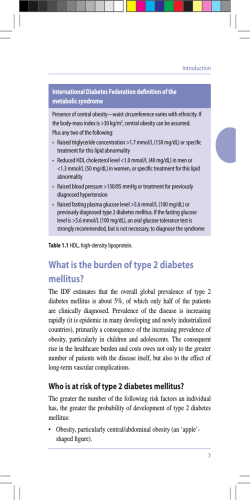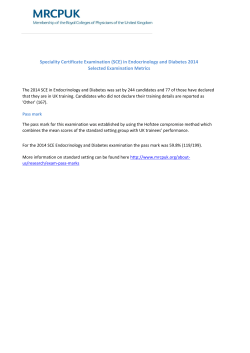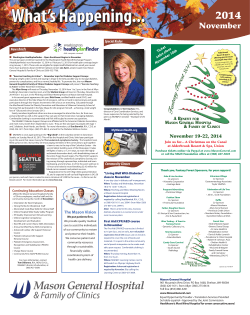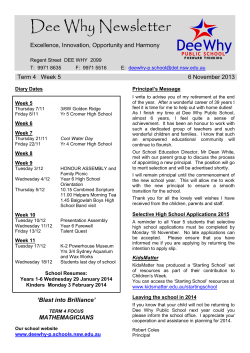
Anveshana Ayurveda Medical Journal
www.aamj.in ANVESHANA Research Article AYURVEDA MEDICAL JOURNAL OPEN LABEL SINGLE ARM PILOT STUDY ON THE EFFICACY OF INDIGENOUS AYURVEDIC COMPOUND DRUGS IN THE MANAGEMENT OF DIABETES MELLITUS Mruthyunjaya Swamy Anitha M. Swamy Chief Consultants, Shathayu Wellness Centre, Ganganagar, Bengaluru, India Corresponding email: [email protected] ABSTRACT Diabetes Mellitus is the most common and highly prevalent non-communicable lifestyle disorder till date. Impaired glucose tolerance is a precursor to development of Hyperglycemia in diabetes. Tackling this disease is a huge task today in front of all the streams of medical sciences. In this regard an observational pilot study was conducted with Ayurvedic Formulations. The study aimed at the variation in fasting blood sugar (FBS) and post prandial blood sugar (PPBS) variations during the 3 course of medication. The changes were observed and are reported. The study gave an appreciable reduction in the parameters and created a ray of hope in the management of Diabetes mellitus through Ayurveda. Key words: Diabetes mellitus, FBS, PPBS, Ayurvedic formulations INTRODUCTION Diabetes Mellitus is the most common and highly prevalent noncommunicable lifestyle disorder till date. Impaired glucose tolerance is a precursor to development of Hyperglycemia in diabetes1. Ayurveda is becoming a ray of hope to the patients of Diabetes mellitus. The explanations available in Ayurvedic texts are highlighting the combined efficacy of conservative and lifestyle management measures. Due to its increased incidence, it has become a burning challenge to all Ayurvedic Practitioners to find an effective solution resulting in the management of disease. Bengaluru (capital city of Karnataka, India) is a fast growing high-tech city. The working pattern, stressful life and unhealthy, irregular food habits has influenced the population to become the victims of Diabetes mellitus. This was the motivation to conduct a research work on Diabetes mellitus and provide a promising Ayurvedic health care facility to the stipulated population of Bengaluru. In this regard a pilot study was taken up on Diabetes mellitus in Shathayu Ayurveda Wellness centres affiliated to Shathayu Foundation (R), Bengaluru. Medicines explained in various contexts of Ayurvedic literature were selected and a compound preparation was formulated for the treatment of Diabetes Mellitus. Tab CP map, Tab Diacid and Tab Hepafit were the formulations selected with traditional practice basis. Mruthyunjaya and Anitha: Efficacy of Indigenous Ayurvedic Compound Drugs in the Management of Diabetes Mellitus The etiology of diabetes in India is multi-factorial and includes genetic factors coupled with environmental influences such as obesity associated with rising living standards, steady urban migration, and lifestyle changes. Ayurveda is an ancient science of India proved its efficacy in giving a positive benefit to the Diabetic patients. AIMS AND OBJECTIVES To treat the early diagnosed cases of Diabetes Mellitus To assess the Hypoglycaemic effect of Indigenous Ayurvedic Compounds Observing the incidence of risk factors and complications of Diabetes mellitus METHODOLOGY The present trial was an Open Label Single arm pilot study consisting of 100 (one hundred) patients who fulfil the diagnostic, Inclusion and Exclusion criteria. Patients were included irrespective of sex, occupation, religion and socio economical status. Patient’s age group was ranging from 25yrs to 70yrs. Raised blood Sugar level was the only parameter to include in the study. Interventions: Tab. C.P. Map: Chandraprabha gulika & Gokshuradi guggulu2 Tab. Diacid: Gymnema sylvester leaf and root, Eugenia jambolana seed, Emblica officinalis fruit, Curcuma longa dried rhizome, Casearia esculenta root, Enicostemma littorale herb, Asphaltum. Tab. Hepafit (Each one tab BD) Phyllanthus niruri, Tinospora cordifolia, Azadirachta indica, Boerrhaavia diffusa, Eclipta alba, Picrirhiza kurroa, Andrographis paniculata. Organic Wheat Grass Powder The total duration of treatment was 3 months. All the patients were followed up AAMJ / Vol. 1 / Issue 1 / Jan – Feb 2015 for a period of 6 months to observe the complications. Assessment Criteria: The Hypoglycaemic effect was assessed only with FBS and PPBS levels. OBSERVATIONS AND RESULTS Table 1: Showing Age wise distribution of patients Age 20 - 30 31 - 40 41 - 50 51 - 60 61 - 70 71 - 80 No. of patients 04 17 31 30 17 01 Table 2: Showing sex wise distribution of patients Sex Male Female No. of patients 66 34 Table 3: Showing Marital status of patients Marital status Married Unmarried No. of patients 97 03 Table 4: Showing occupational status of patients Occupation Govt employee Business Housewife Retired employee Agriculture/Farmer Employee Engineer Retired Social Service Self employee Working No. of patients 8 22 30 1 2 26 1 6 1 2 1 The obtained Data of the FBS and PPBS were observed before and after treatment. So this is a preliminary observation done in the Blood – Sugar variation of the patient during the medication. As the study was a pilot study based on a single criteria, 22 Mruthyunjaya and Anitha: Efficacy of Indigenous Ayurvedic Compound Drugs in the Management of Diabetes Mellitus restricted to prove with suitable tests of significance. When the observational data was analysed and interpreted along with the laboratory Findings of FBS and PPBS there was a marked improvement in the symptoms of Diabetes mellitus. Table 5: Showing BT and AT difference in FBS Particulars n Mean Median Standard error of mean Standard deviation Before Treatment 100 165.0 152.5 After treatment 100 130.8 120.5 5.161 4.260 51.61 42.60 Table 6: Showing BT and AT difference in PPBS Particulars n Mean Median Standard error of mean Standard deviation Before Treatment 100 239.0 225.5 After treatment 100 189.9 168.0 7.364 6.373 73.64 63.73 DISCUSSION & CONCLUSION Diabetes mellitus is occupying the major Indian population as a lifestyle disorder. In the Present study the disease was more prevalent in 4th and 5th decade of life i.e. 31 & 30 patients included in the study AAMJ / Vol. 1 / Issue 1 / Jan – Feb 2015 were of 41-50 and 51-60 age groups respectively. The distributions of patients were more in Housewives and working class. This denotes that the disease is more prone to the working population of the country. The poly herbal drugs included formulations were having their action over Hyperglycemia. Mean difference of FBS and PPBS were appreciable in the trial. In this study we could appreciate only the Hypoglycemic effect. This observation has initiated to conduct a standard clinical trial with all established parameters of Diabetes mellitus with suitable Research protocols. The study showed a significant hypoglycaemic effect in Diabetic patients. Conservative management of disease along with the life style modifications became the heart of this study. This successful Pilot Study has laid a milestone to take up this study in a large scale by fulfilling all the research protocols. REFERENCES 1. Exploring the Research on Diabetes Mellitus: Status of Current Evidence from a 40-year Quantitative Trend Analysis of Published Articles: http://www.scopemed.org/?mno=38932. 2. Shri Govind Das – Bhaishajya ratnavali; edited by Bhishagratna Brahma Shankar Mishra: Choukamba Prakashan, Varanasi; pp.321; pp.1312 23
© Copyright 2025









